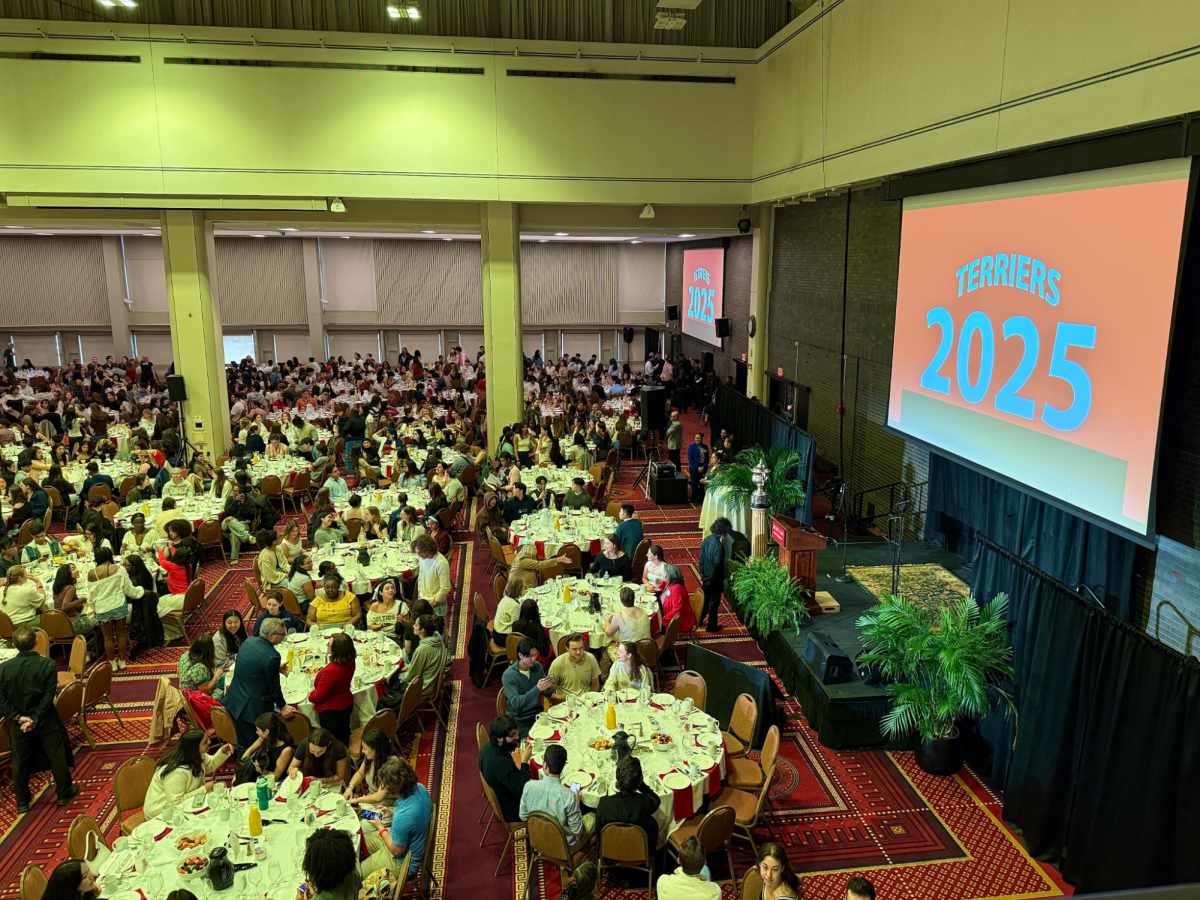
The Boston University School of Public Health’s Activist Lab unveiled a new set of photos from its “Life on Albany” series in the Crosstown Center last week, featuring residents of the area commonly known as “Methadone Mile” — a stretch of Massachusetts Avenue in the South End beset with opioid use.
Harold Cox, the associate dean for public health practice and the director of SPH’s Activist Lab, said the series is intended to advocate on behalf of that community and fight the stigma perpetuated by terms like “Methadone Mile.”
“It’s important for us to bring awareness to the population, in part because our school is surrounded by the individuals who are in the area,” Cox said. “We find that term, ‘Methadone Mile,’ to be derogatory and incendiary, and it is not the best way to describe the people who are in the area.”
Cox suggested using terms like “Recovery Road,” or “Mass Cass,” referring to the intersection of Massachusetts Avenue and Melnea Cass Boulevard, instead.
The latest set of photos consists of 12 photos of three individuals, each captioned with quotes from the subjects themselves.
Liam Hunt, the Activist Lab’s educational technologist and the “Life on Albany” photographer, said he tries to compose eye-catching photos to attract the attention of people who may not otherwise be aware of the challenges faced by the residents of Recovery Road.
“I try to make photographs that are striking,” Hunt said, “to get people’s attention as a way to engage people that might not be paying attention to whatever is going on out there.”
Hunt said the latest set of photos offers a deeper look into the lives of its subjects than the series’ first set in March, in which he and Cox only had a few minutes with each person.
“Because we were with [the second set of subjects] for an hour and a half, we were able to get a lot more photos, and a lot of different emotions came through in those photos,” Hunt said, “so it’s a deeper dive into fewer people as opposed to a survey set of a larger number of people.”
SPH dean Sandro Galea said “Life on Albany” represents a constructive way of engaging with the Recovery Road community, which surrounds SPH’s campus.
“The series aims to remind those of us in SPH of who our neighbors are,” Galea wrote in an email, “bringing us closer to our local community and, through creating the series, showing the local community that we want to engage.”
Galea said the photo series also serves as a reminder of SPH’s mission to improve the health of marginalized populations.
“The series then is a way of representing our work with the local community, reminding us all of who we are and what we do,” Galea wrote.
After viewing the latest photos in the series, several students said they think “Life on Albany” could serve to raise awareness of the opioid epidemic and the stigma surrounding it.
Julie Fager, a College of Communication junior, said she thinks while the photo series might not end the stigma around opioid addiction, it could help to raise awareness around the issue.
“I’m not sure if [the series] is good for ending it,” Fager said, “but it’s definitely shedding light on it, where some people may not know what it’s like.”
Nick Eberhard, a sophomore in the College of Engineering, said he thinks the photos could be even more impactful if they were more widespread.
“[The series] is a good way to get that initial awareness, but I think to start more of a conversation about it, there needs to be something a little more in-depth,” Eberhard said. “It has power behind it, but I think more needs to be done to get a full movement going to change things.”
Minette Wellborn, a Questrom School of Business freshman, said she thinks the photos humanize a population that is often ignored.
“They’re real people with real feelings who are going through this,” Wellborn said. “I feel like sometimes, we don’t really see people going through hard times — people experiencing homelessness or who are addicted to drugs — as human necessarily.”
























































































































Cheryl Bartlett • Nov 1, 2017 at 10:51 am
Thank you for your work on this project and putting faces to this public health crisis.